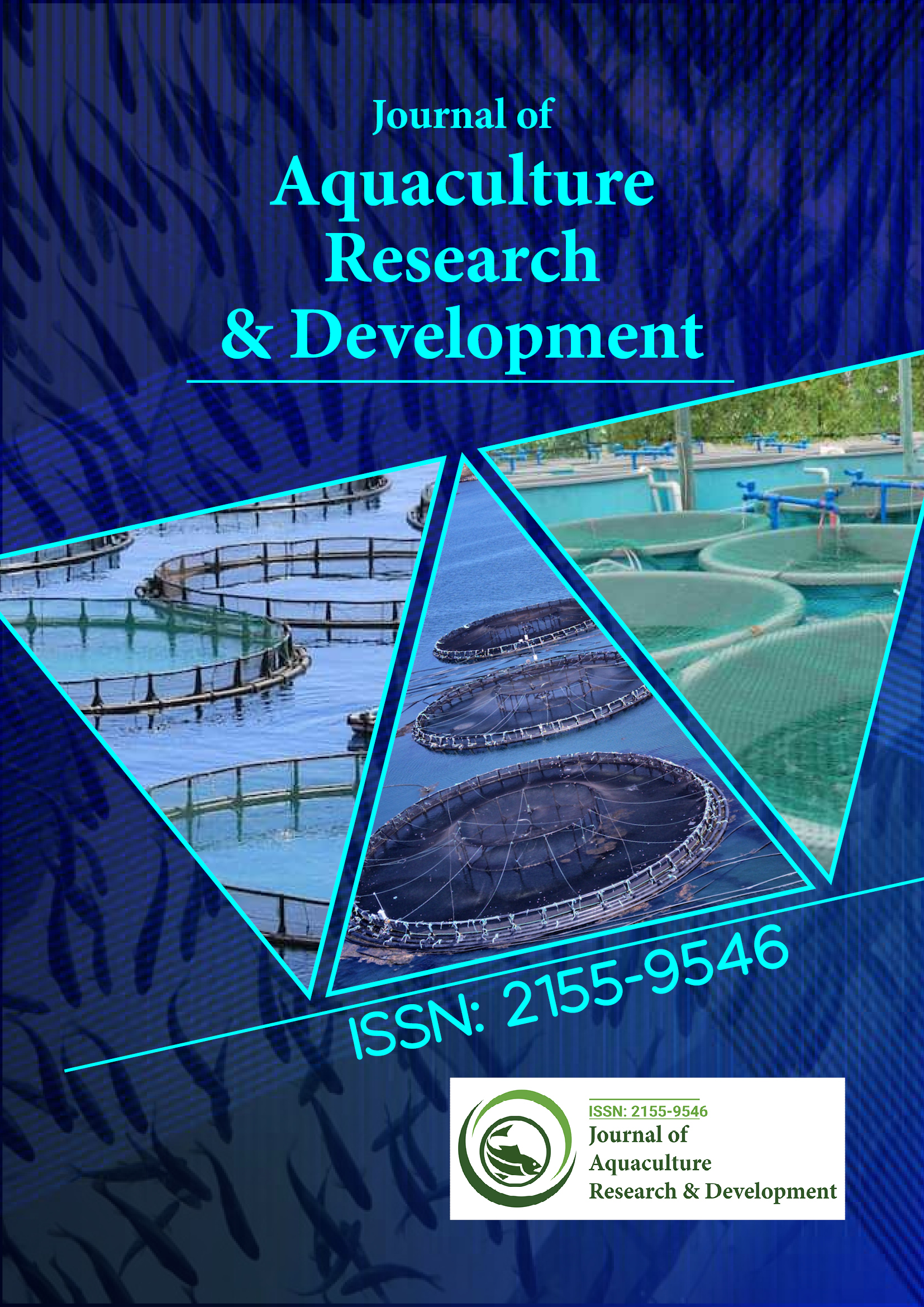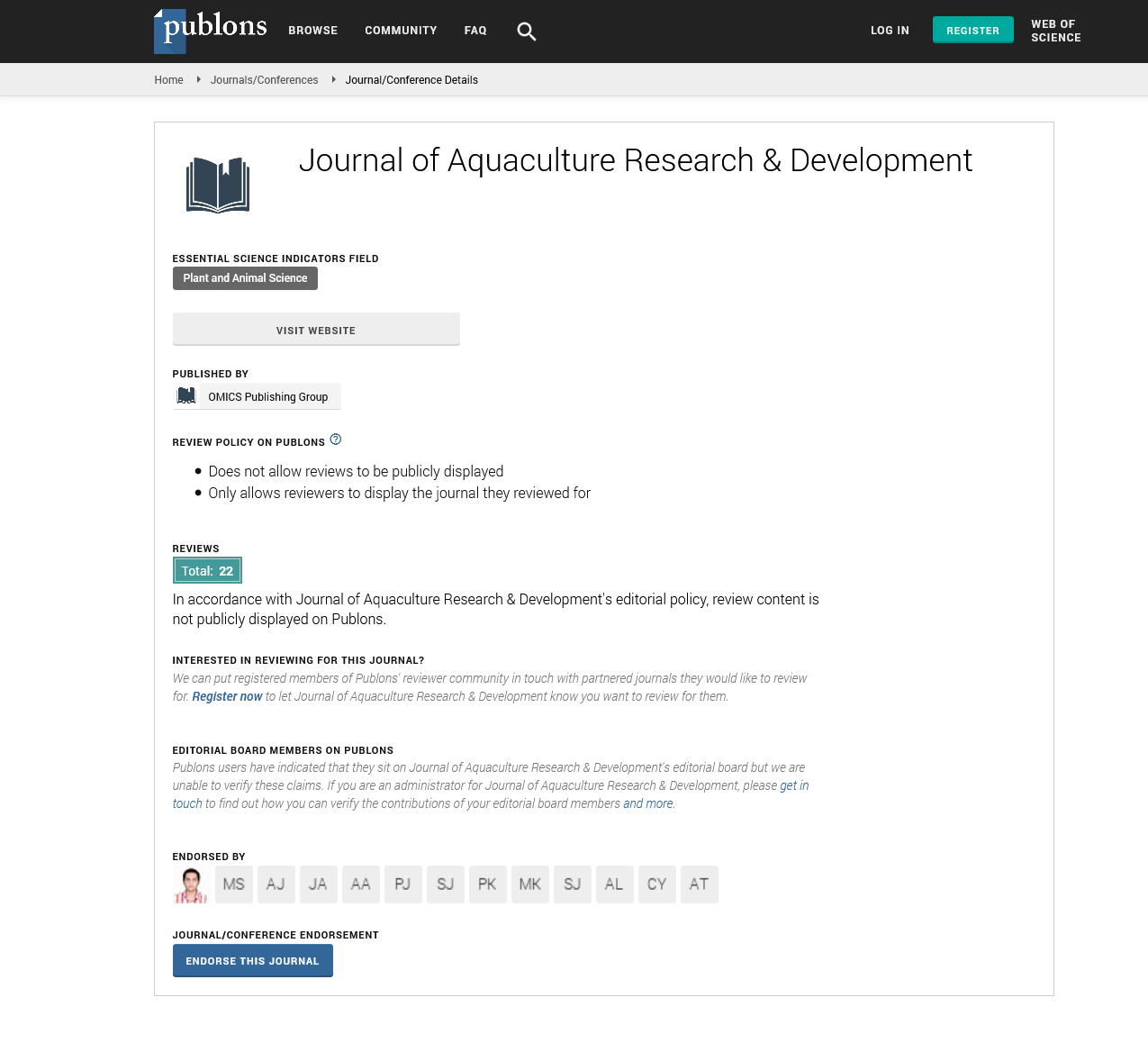Indexed In
- Online Access to Research in the Environment (OARE)
- Open J Gate
- Genamics JournalSeek
- JournalTOCs
- Scimago
- Ulrich's Periodicals Directory
- Access to Global Online Research in Agriculture (AGORA)
- Electronic Journals Library
- Centre for Agriculture and Biosciences International (CABI)
- RefSeek
- Directory of Research Journal Indexing (DRJI)
- Hamdard University
- EBSCO A-Z
- OCLC- WorldCat
- Scholarsteer
- SWB online catalog
- Virtual Library of Biology (vifabio)
- Publons
- MIAR
- University Grants Commission
- Euro Pub
- Google Scholar
Useful Links
Share This Page
Journal Flyer

Open Access Journals
- Agri and Aquaculture
- Biochemistry
- Bioinformatics & Systems Biology
- Business & Management
- Chemistry
- Clinical Sciences
- Engineering
- Food & Nutrition
- General Science
- Genetics & Molecular Biology
- Immunology & Microbiology
- Medical Sciences
- Neuroscience & Psychology
- Nursing & Health Care
- Pharmaceutical Sciences
Commentary - (2025) Volume 16, Issue 4
Enhancing Fish Farming Outcomes with Technological Solutions
Moti Miller*Received: 28-Mar-2025, Manuscript No. JARD-25-29668; Editor assigned: 01-Apr-2025, Pre QC No. JARD-25-29668 (PQ); Reviewed: 15-Apr-2025, QC No. JARD-25-29668; Revised: 22-Apr-2025, Manuscript No. JARD-25-29668 (R); Published: 29-Apr-2025, DOI: 10.35248/2155-9546.25.16.979
Description
Aquaculture has grown rapidly in recent decades, addressing the increasing global demand for fish protein and contributing to food security, income generation, and employment in rural and coastal communities. Traditional fish farming practices, while providing sustenance, often face limitations such as low productivity, disease outbreaks, and environmental degradation. Modern aquaculture technologies provide opportunities to enhance production efficiency, improve fish health, optimize feed utilization, and reduce environmental impact. These innovations are reshaping aquaculture into a more sustainable and commercially viable enterprise that supports both local communities and global markets.
Recirculating aquaculture systems
Recirculating Aquaculture Systems (RAS) represent a major leap in intensive fish farming technology. These systems utilize advanced filtration, oxygenation, and water circulation processes to maintain high water quality while significantly minimizing water consumption. Fish are raised in tanks under carefully controlled conditions, ensuring consistent growth environments independent of natural water bodies.
The benefits of RAS include improved growth rates due to stable environmental conditions, reduced disease incidence through better pathogen management, and minimized effluent discharge into surrounding ecosystems. For example, in countries like Norway and Denmark, RAS facilities have allowed year-round salmon production with minimal impact on local rivers and coastal areas. While the initial investment costs are relatively high, long-term sustainability is achieved through higher production density, reduced water dependency, and efficient resource use.
Automated feeding systems
Feeding is one of the largest operational costs in aquaculture, often accounting for over half of total production expenses. Automated feeders, equipped with sensors, timers, and in some cases cameras, allow precise feed delivery tailored to fish size, appetite, and activity levels. This prevents overfeeding, which not only reduces feed waste but also lowers water pollution caused by uneaten feed particles.
Modern feeding systems have demonstrated significant improvements in Feed Conversion Ratios (FCR), a key measure of efficiency. In commercial farms in Asia, camera-assisted feeders have enabled farmers to monitor fish behavior in real time and adjust feeding accordingly, boosting productivity and reducing labor requirements. Such systems make aquaculture more predictable and profitable, particularly in intensive or semiintensive production setups.
Water quality monitoring and management
Water quality is a critical factor influencing fish growth, survival, and disease susceptibility. Modern aquaculture relies on advanced sensors and monitoring systems to continuously measure parameters such as temperature, dissolved oxygen, pH, ammonia, and turbidity. Automated alarms are triggered when values deviate from optimal ranges, allowing farmers to act quickly and maintain stable rearing environments.
The integration of Internet of Things (IoT) devices and data analytics has further enhanced water quality management. Predictive models can forecast oxygen depletion or ammonia spikes, enabling preventive actions such as timely aeration, water exchange, or chemical treatment. For instance, shrimp farms in India have begun adopting real-time water monitoring systems to reduce crop losses from sudden environmental fluctuations. Such approaches not only improve fish welfare but also reduce input costs associated with disease treatment.
Disease detection and management
Disease outbreaks remain one of the greatest risks in aquaculture, often resulting in heavy economic losses. Recent advances in diagnostic tools, including molecular assays, biosensors, and rapid pathogen detection kits, allow early identification of viral, bacterial, or parasitic infections. Early detection means timely interventions through vaccines, probiotics, or biosecurity measures, significantly reducing mortality.
Modern biosecurity protocols emphasize strict control over farm entry, routine disinfection, and quarantine measures for new stock. Some farms also adopt probiotics to maintain healthy microbial communities in water systems, reducing the need for antibiotics. In Chile’s salmon industry, genetic selection combined with vaccination programs has helped curb devastating outbreaks of infectious salmon anemia. These measures not only protect farm profitability but also safeguard public confidence in aquaculture products.
Selective breeding and genetics
Selective breeding supported by modern genetic tools has transformed aquaculture productivity. Through marker-assisted selection, farmers can identify and propagate traits such as fast growth, disease resistance, and efficient feed utilization. Advances in molecular genetics have accelerated breeding cycles, enabling the production of improved strains in shorter timeframes.
For example, Genetically Improved Farmed Tilapia (GIFT) developed in the Philippines has shown growth rates up to 60% higher than unimproved strains. Hybridization techniques, as applied in catfish and carp farming, have also produced species with superior performance in commercial settings. These improvements translate into higher yields, greater profitability, and more sustainable aquaculture practices by reducing reliance on excessive feed and chemical treatments.
Citation: Miller M (2025). Enhancing Fish Farming Outcomes with Technological Solutions. J Aquac Res Dev. 16:979.
Copyright: © 2025 Miller M. This is an open-access article distributed under the terms of the Creative Commons Attribution License, which permits unrestricted use, distribution, and reproduction in any medium, provided the original author and source are credited.

